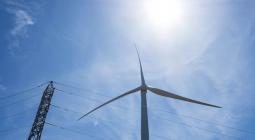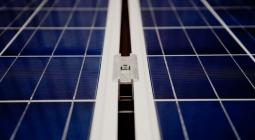Isn’t It Time To Devote Sovereign Wealth Funds To Tackle Climate Change?

The world faces significant challenges from climate change and the related shifts in the global energy landscape. Partially, these stem from the rise of renewables and changing patterns of energy consumption, which are strikingly evident to investors and their wealth managers. With the harm of climate change and the investment in solutions to mitigate it both advancing, sustainable development, renewable energy, and economic diversification continue to grow.
For instance, 40% of the increase in energy consumption between now and 2040 will be in electricity, of which renewables are the fasting growing source. Indeed, the consumption of renewable energy is predicted to increase by an average of 2.3% a year between 2015 and 2040, ushering in the largest change in primary energy consumption since the expansion of nuclear power from 1966-1991. This could cause changes in global energy use that will be as dramatic as the shift from coal to oil roughly a century ago. The shifting global energy landscape will impact the revenues and economies of fossil fuel rich nations, and now investment discussions are turning to ways that policy-linked, private sector investment techniques can address these challenges.
Rethinking sovereign wealth funds may be the answer to meeting the needs of a new global energy landscape.
According to the World Economic Forum, policy makers have wrangled for decades with the challenge of transforming 2 kinds of assets into sustainable development:
- commodity wealth — economic goods or services as equivalent without regard to who produced them
- state assets — government-owned property like residential, commercial and industrial land plus other physical assets like machinery
This dilemma, it seems, is most apparent in the countries where levels of commodity wealth and economic dependence on it are the highest. The gradual global shift from fossil fuels to renewables will impact asset values and have broad economic and geopolitical implications in these countries. As a result, questions emerge:
- What role sovereign funds should play in diversifying local economies?
- What financial exposure do countries face during the global energy transition from their state assets?
- How should economic and investment policy change to mitigate risks?
The World Economic Forum suggests that there’s an underutilized pool of capital available to help tackle climate change – sovereign wealth funds.
Figures compiled by the United Nations Environment Program estimate that, in the past 3 years, sovereign wealth funds have invested a total of just $11 billion in renewable energy companies, green energy projects, and climate-oriented debt, comprising less than 0.2% of their total assets. The UN study from which these figures emerge suggests that sovereign funds have been inhibited from developing greener portfolios because of a reluctance to forgo returns from the oil and gas industries.
As the world moves away from fossil fuels, many of the nations have tapped their natural resources to set up sovereign wealth pools. In doing so, they risk being left with reserves of oil and gas for which demand is dwindling. The World Economic Forum argues that there’s a “structural risk of not acting – namely that a global energy revolution leaves nations stranded and without the resource revenues needed to diversify down the road.” Sovereign funds, they say, have an advantage over other potential investors to finance green energy projects.
The Sovereign Wealth Fund Institute, which is a global corporation analyzing public asset owners such as sovereign wealth funds and other long-term governmental investors, reveals that more than 70 national funds control about $8 trillion of assets, with the majority of their money generated by oil and gas income.
Sovereign wealth funds, the World Economic Forum outlines, are “better equipped to take advantage of environmental, social and governance investment strategies than private counterparts, as they can better afford to wait to see the social as well as financial benefits of such an approach.” They can also take advantage of longer time horizons than private investors.
Globally, clean energy investment has topped $300 billion annually for the past five years, according to figures compiled by Bloomberg New Energy Finance. Around the world, the amount allocated by venture capital and private equity firms to clean energy projects jumped by 127% in 2018 to reach $9.2 billions.
In The Changing Wealth of Nations 2018, the World Bank cites 4 key risks to the development trajectory of fossil-fuel-rich economies.
- Existing assets are likely to both decline in value and remain untapped, eroding an important income stream for these countries.
- Even if these developments are decades away, the impediments to taking further advantage of these assets in the short term are considerable.
- Most fossil-fuel-rich economies have multiple points of exposure to carbon assets, such as downstream industries or national oil companies, which are also at risk of suffering when carbon assets decline in value.
- Whether it is the “natural resource curse” or ongoing difficulties to diversify across a broader range of economic sectors, the range of challenges associated with being a fossil-fuel rich economy persistent.
One thing is certain: if demand for fossil fuels fall over time, so will their market value.
A Multi-Stage Process to Explore New Investment Models
A World Economic Forum report titled “Thinking Strategically” frames the debate about clean energy investment with the understanding that investors around the world are becoming acutely aware of their financial and human costs. Fossil-fuel-rich, resource-dependent nations bear multiple points of exposure to this global economic transition, as their institutions, infrastructure, and wealth are based on an economic model that will gradually diminish.
As more money, time and human capital are invested in renewable energy, the efficiency of these technologies will rise even as costs continue to plummet. As these technologies approach cost parity with their hydrocarbon competition, the rate at which countries abandon fossil fuels will accelerate dramatically. Despite currently accounting for only 3.6% of global energy consumption, the IEA expects 72% of future investment in power generation globally between now and 2040 to be in wind and solar technologies, driven mostly by China.
Accordingly, this clear signal from the market shows where the future of energy production and consumption lies.
The report lists 4 critical developments in the global energy landscape that will force hydrocarbon-based sovereign wealth funds to reconsider their investment mandates, asset allocations, and outflow time frames.
- Electrification and decarbonization will accelerate as technology improves and risks converge.
- Growth in energy demand will slow overall, even as some regions continue to develop, electrify and industrialize.
- Oil producers are likely to face problems of overabundance and newfound competition.
- Energy systems will decentralize in response to the ‘Fourth Industrial Revolution.’
Final Thoughts
The risks from a global “energy revolution” are far better understood than what such a revolution might look like. Yet, the reality of climate change is around us. In 2017, the cost of insuring against natural catastrophes reached $350 billion. The conclusion to Thinking Strategically (which is a fascinating read in its entirety, by the way), quotes Rashid bin Saeed Al Maktoum, the Emir of Dubai.
“My grandfather rode a camel, my father rode a camel, I drive a Mercedes, my son drives a Land Rover, his son will drive a Land Rover, but his son will ride a camel.”
Perhaps we are facing the reality that our “advanced” civilization that was based on a fossil fuel economy was a ruse and that we are destined to return to respect and appreciation for the earth in order to continue to live here joyously. In the capitalist-oriented world in which we live, devoting our sovereign wealth to clean energy is now a necessity.
4 March 2019
Clean Technica



